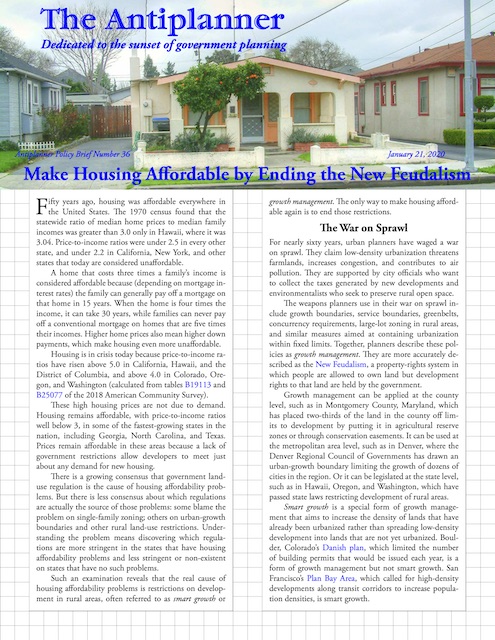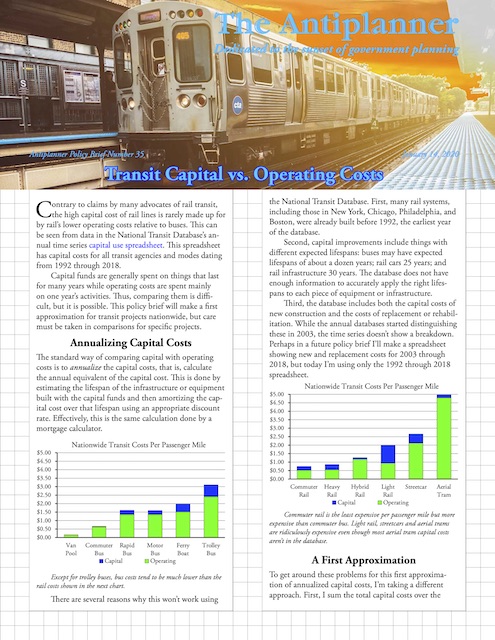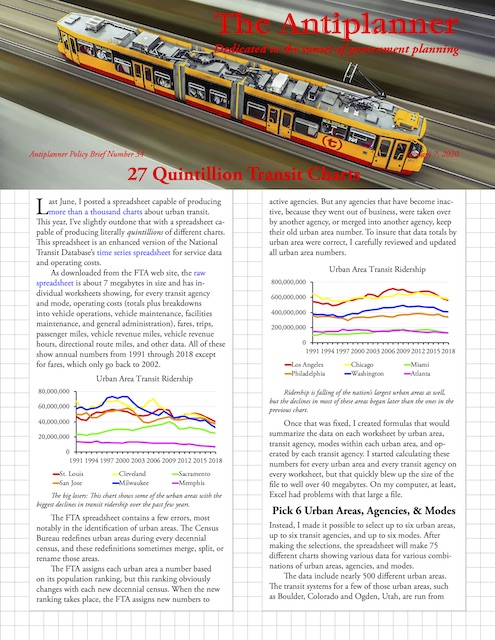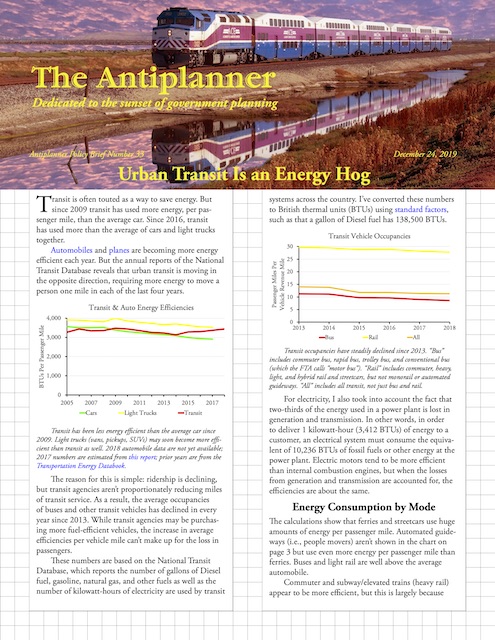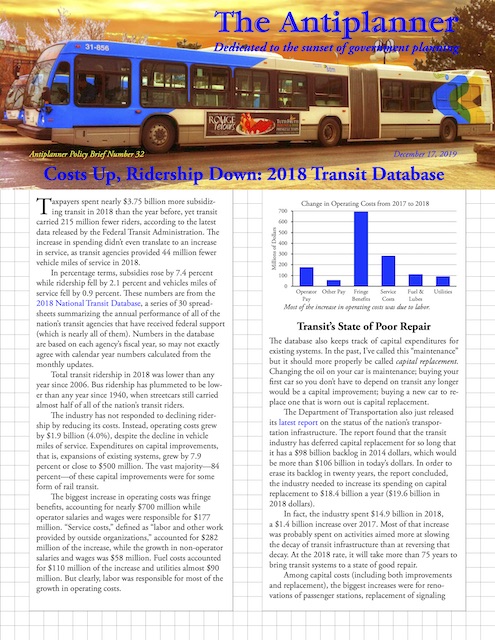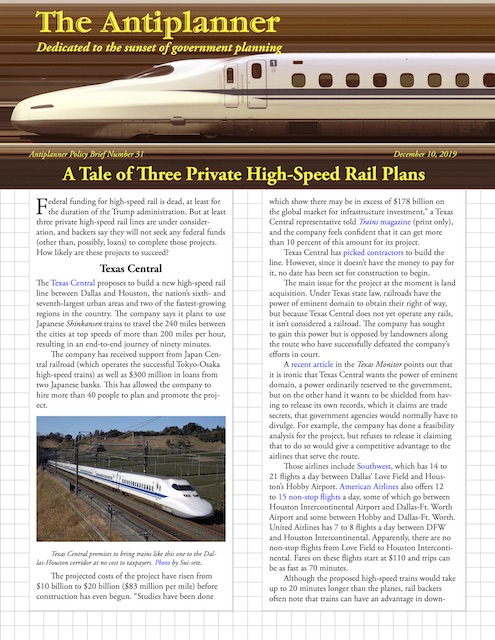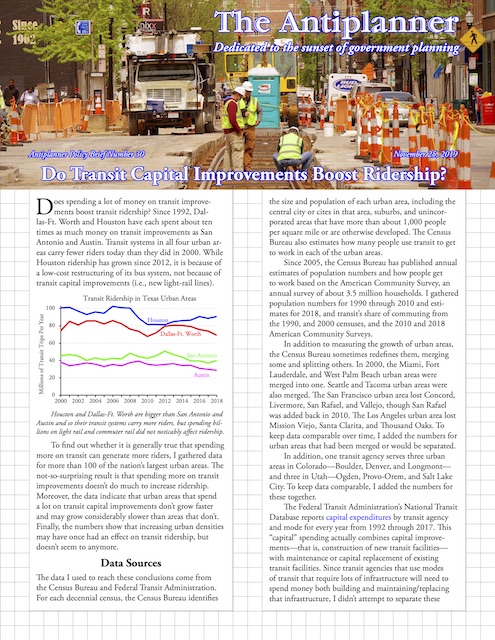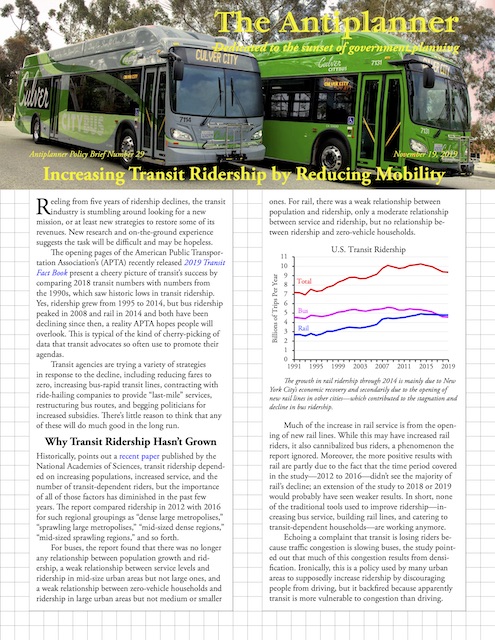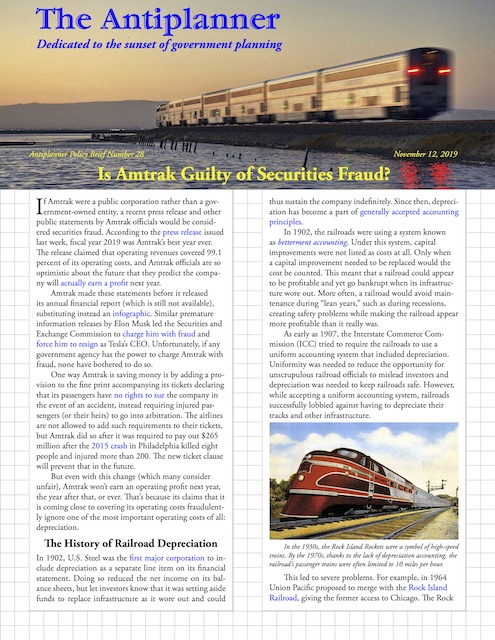Honolulu is building what may be the most expensive above-ground rail line in the world. The 20-mile line is expected to cost $9.2 billion, more than the cost of the 243 miles of light-rail lines in Sacramento, Saint Louis, Salt Lake City, San Diego, and San Jose combined. While the FTA classifies Honolulu’s line as heavy rail, it’s passenger capacity will be about the same as light rail, as platforms will only be large enough for four-car trains.
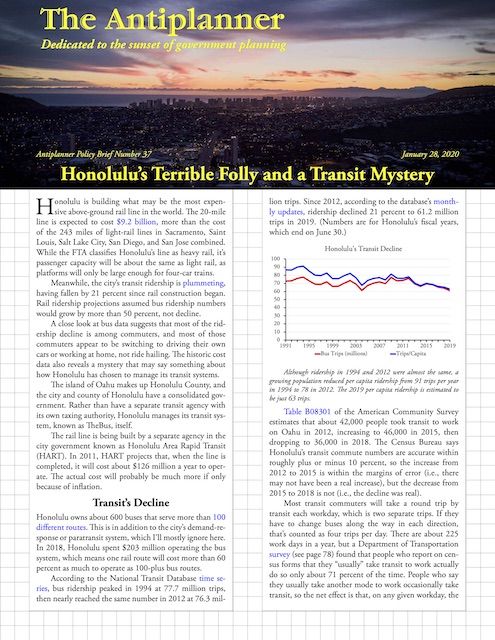 Click image to download a four-page PDF of this policy brief.
Click image to download a four-page PDF of this policy brief.
Meanwhile, the city’s transit ridership is plummeting, having fallen by 21 percent since rail construction began. Rail ridership projections assumed bus ridership numbers would grow by more than 50 percent, not decline. Continue reading

